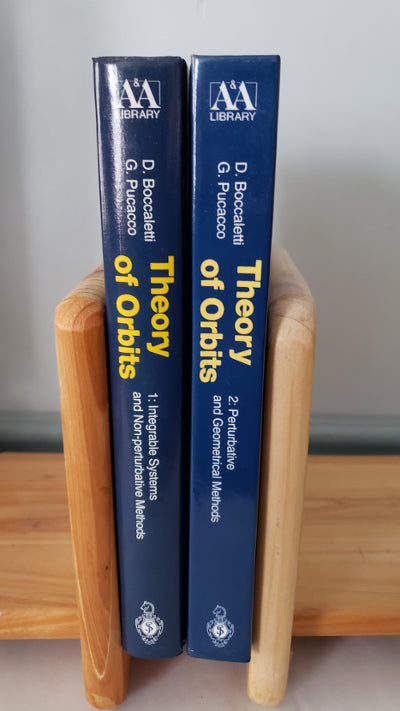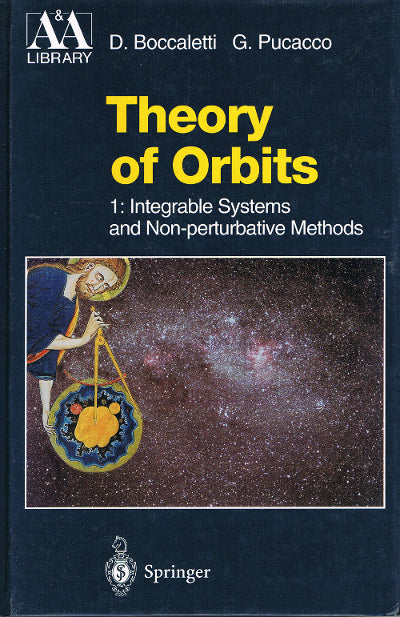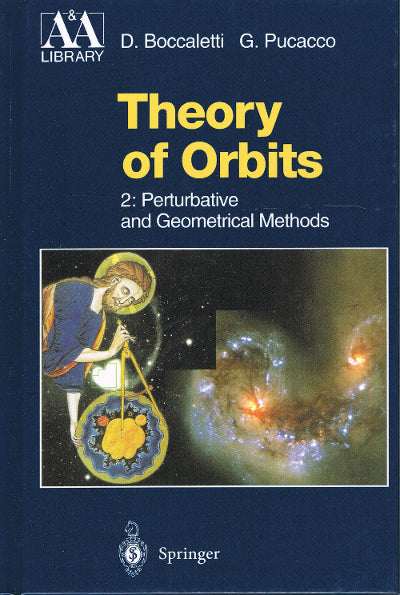Theory of Orbits, 2-Volume Set (Hardback)
Theory of Orbits, 2-Volume Set (Hardback)
Condition
VERY GOOD: Both books are in extremely good condition, showing very little sign of use and wear. There is no writing on the pages, which are printed on acid-free paper.Product Details
Continued from the back covers: "The two volumes are meant for students in astronomy and physics alike. Prerequisite is a physicist's knowledge of calculus and differential geometry."
These volumes are part of the Astronomy and Astrophysics Library published by Sprinter.
VOLUME 1: Integrable Systems and Non-pertubative Methods
"This volume begins with classical mechanics and with a thorough treatment of the 2-body problem, including regularization, followed by an introduction to the N-body problem with particular attention given to the virial theorem. Then the authors discuss all important non-perturbative aspects of the 3-body problem. They end with a final chapter on the integrability of Hamilton-Jacobi systems and the search for constants of motion."
Sections and Chapters: Introduction — The Theory of Orbits from Epicycles to "Chaos"; Chapter 1: Dynamics and Dynamical Systems — Quod Satis; Chapter 2: The Two-Body Problem; Chapter 3: The N-Body Problem; Chapter 4: The Three-Body Problem; Chapter 5: Orbits in Given Potentials; Mathematical Appendix; Bibliographical Notes; Name Index; Subject Index.
VOLUME 2: Perturbative and Geometrical Methods
"The first three chapters of this second volume are devoted to the theory of perturbations, starting from classical problems and arriving at the KAM theory, and to the introduction of the use of the Lie transform. A whole chapter treats the theory of adiabatic invariants and its applications in celestial mechanics and stellar dynamics. Also the theory of resonance is illustrated and applications in both fields are shown. Classical and modern problems connected to periodic solutions are reviewed. The description of modern developments of the theory of chaos in conservative systems is the subject of a chapter in which an introduction is given to what happens in both near-integrable and non-integrable systems. The invaluable help provided by computers in the exploration of the long-time behaviour [sic] of dynamical systems is acknowledged in a final chapter, where some numerical algorithms and their applications both to systems with few degrees of freedom and to large N-body systems are illustrated."
Sections and Chapters: Chapter 6: Classical Perturbation Theory in Celestial Mechanics. The Equations of Planetary Motions; Chapter 7: Canonical Perturbation Theory; Chapter 8: Lie Transform Perturbation Theory; Chapter 9: The Theory of Adiabatic Invariants; Chapter 10: Periodic Orbits and Resonances; Chapter 11: Chaos; Chapter 12: Numerical Experiments; Bibliographical Notes; Name Index; Subject Index; Corrections to Volume 1.
Share






